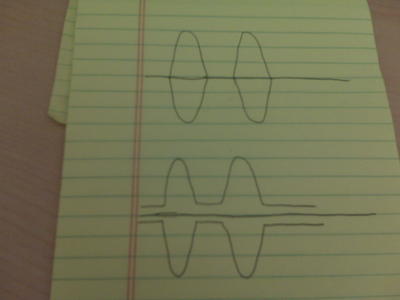What I got out of this paper is that negative peak clipping (in broadcast stations, anyway) generates more splatter than regular overmodulation (carrier pinchoff). Also, if NPC is used, it should be implemented in the audio chain, and be followed by a sharp rolloff low-pass filter (the type of circuit that MrSuburban described and uses on his Johnson Valiant). Finally, a "protection clipper" should be installed in the rf output circuit to limit any negative peak overshoot that might cause carrier pinchoff. The circuit that TOLL_FREE posted fits this requirement completely.[/FONT]
The 3 diode modification does not clip, does not compress, and is not followed by any filter. It does nothing more then sustain a certain value of carrier and has no real effect on reshaping the flattened waveform. If you want to know exactly why the diode circuit does not work, read this
http://www.w8ji.com/Johnson audio mods.htm Scroll down to the "Diode super modulation modification" and read what Tom W8JI says.
Here is what is important "1.) Going to zero-carrier is actually not what causes splatter or excessive bandwidth. The slope of waveform abruptly changing, going in a new direction towards a straight line, causes the signal to get wide. It's really a "Fourier problem", where the rapid change in slope requires high-order harmonics to produce the waveform".
Without reshaping of the slope I argue nothing has been accomplished in terms of spectral purity. What Tom says about a tetrode amp is an entirely different problem with this mod that does not apply in our case. Sadly, it looks like this mod will not keep your TX clean at modulation levels in excess of 100%.



